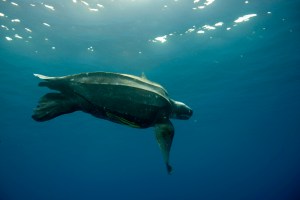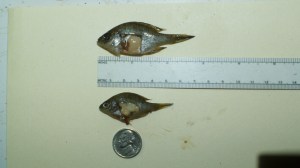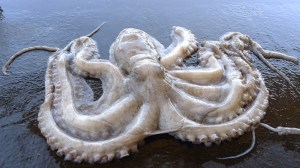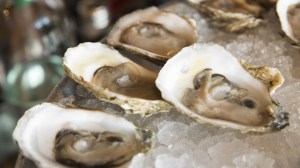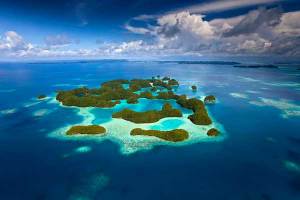Discover stories in Fisheries
Recovery: Rehoming Brook Trout, the Dweller of Springs
Throughout its natural range, the brook trout is finding less and less of what it needs most: clean, cold water. But recovery efforts are underway, Ted Williams reports.
Roadkill on the Ocean Highway: Can Experimental Fishing Reduce Sea Turtle Bycatch in the Pacific?
Sea turtles were once so abundant that they caused traffic jams in the ocean, but now longline fishing and other threats are decimating populations. Could experimental fishing techniques make the sea highways safe for turtles once more?
Restoring the Reef on Lake Michigan Benefits Native Fish
Reef restoration calls to mind corals and colorful fish. But Lake Michigan has reefs too — and they're also vitally important to native fish. A new effort is looking to bring them back.
Why Everything You Know About Bluegill Management is Wrong
Every angler knows that if you don’t remove enough bluegills from a pond, they’ll overpopulate and become stunted. But new research says that idea is usually wrong, and the opposite may be true.
Big Battles, Big Gonads: The Crazy World of the Bluegill Spawn
The common bluegill is easy to take for granted. But come spawning season, a bluegill colony is one of the wildest scenes in nature: part barroom brawl, part cheesy ‘80s romantic comedy.
Recovery: Alewives, the Little Fish with a Big Role
Conservationists are prone to referring to alewives in the past tense, the fish long considered a victim of dams. But they’re back. Ted Williams has the story.
Got Gonads?
Everyone knows her as the gonad girl. And she owns it. Social media meets traditional knowledge in an effort to improve Hawaiian fisheries management.
The Octopus’ Birthday: Understanding an Intelligent & Elusive Marine Creature
Science sheds new light on octopus intelligence, as the animals open jars and pick Super Bowl winners. But despite all that attention, remarkably little is known about their life history in the wild.
Recent Study Pinpoints Where Ocean Acidification Will Hit Hardest
New research reveals regions and communities most vulnerable to ocean acidification’s affect on shellfisheries.
Chasing Cod: Tracking a Fish to Save an Industry
Cod is as much a part of Eastern Massachusetts as the Red Sox. But the fishery has been in long-term decline. Can tracking cod help save them...and an industry?
A Breakthrough for Data-Poor Fisheries Starts in Palau
Find out how a new technique piloted in Palau by The Nature Conservancy could help solve one of the world’s greatest challenges in fisheries management — a simple, low-cost method for assessing fish stocks.
A Lock Holds the Key to Restoring Migratory Fish
Take PVC pipe. Attach to a home water pump. Add water. It’s a simple recipe, but one that might be enough to help move millions of the migratory fish.

